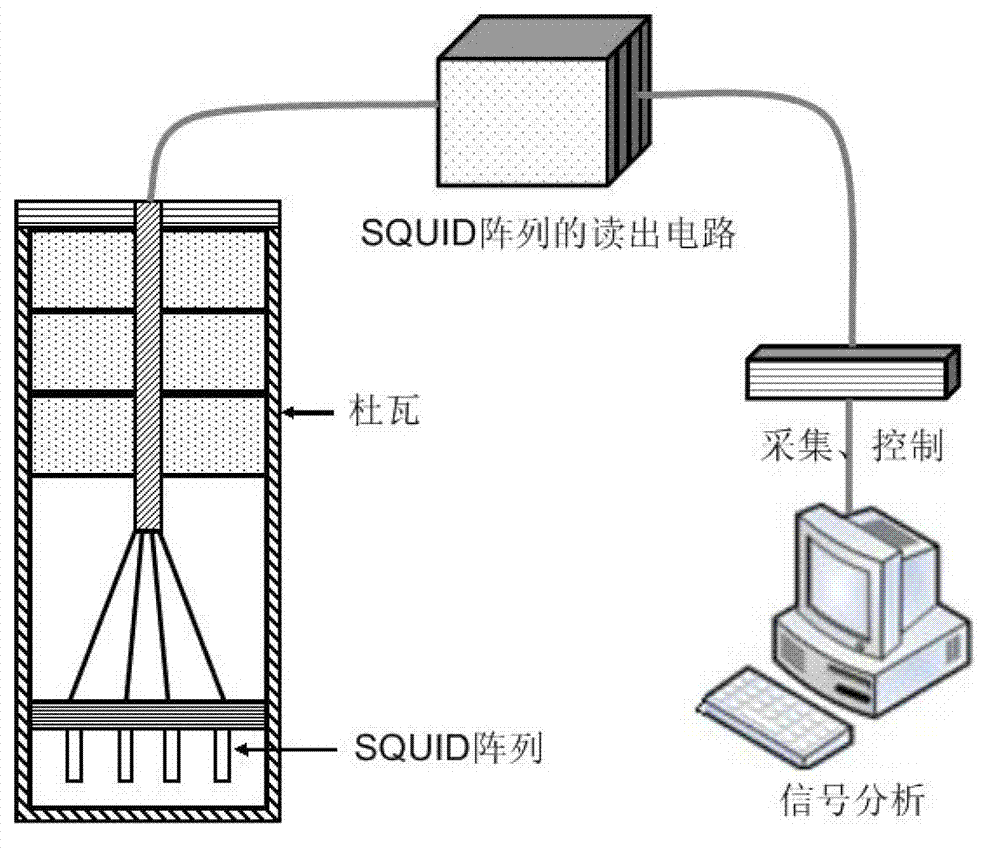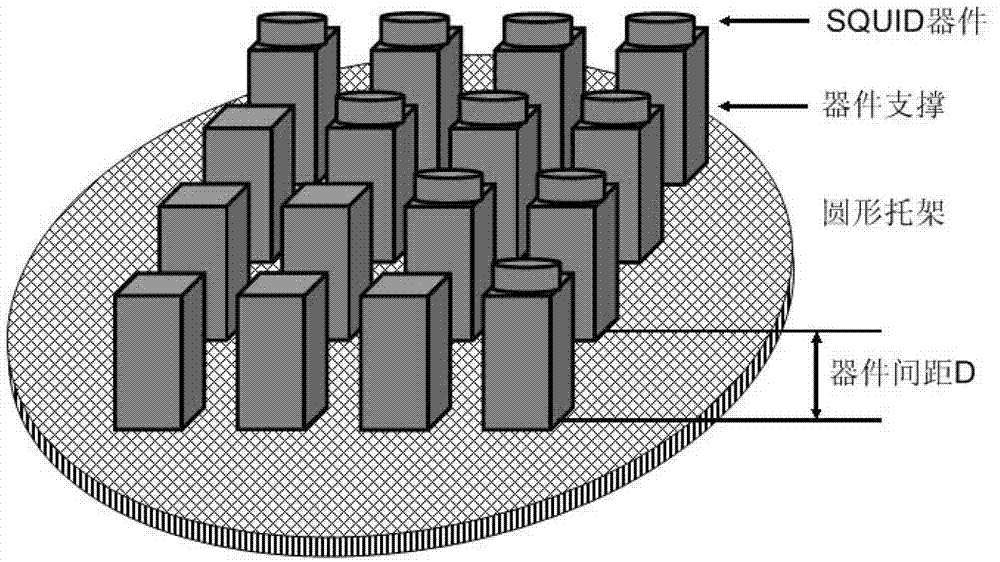Low-frequency ground-penetrating communication system based on squid array
A technology of through-the-earth communication and array, applied in transmission systems, electrical components, etc., can solve the problems of weak communication signal strength, low efficiency of electromagnetic wave transmitting antennas, and reduced reliability and effectiveness of communication systems, so as to improve accuracy, improve The effect of receiving signal-to-noise ratio and reducing communication bit error rate
- Summary
- Abstract
- Description
- Claims
- Application Information
AI Technical Summary
Problems solved by technology
Method used
Image
Examples
Embodiment 1
[0027]The SQUID device is glued on the carrier, and then the carrier is installed on the bracket to form a two-channel planar array. Image 6 is the magnetic field noise measured indoors by the two-channel SQUID and the combined noise of the two channels, from Image 6 It can be seen that in the white noise section, the noise after channel synthesis is smaller than the noise of each individual channel. The experimental results prove that this design scheme has a certain effect in noise suppression. If the channel number of the SQUID array is increased, the noise suppression effect will be greatly improved accordingly, so the present invention has positive significance for improving the system signal-to-noise ratio.
Embodiment 2
[0028] Embodiment 2 The Solution to the Crosstalk Problem
[0029] When the multi-channel readout circuit is connected to the SQUID array, multiple loops are formed. Since the distance between the SQUID devices is relatively close, and the distance between the device and the low-temperature cable connected to the readout circuit is also very small, it is very easy to Severe crosstalk occurs, causing the performance of the SQUID array to degrade or even fail to work properly. Based on the research of the inventor on the problem of SQUID crosstalk, the sources of crosstalk between channels include the following aspects: other channel SQUID feedback magnetic flux interference; other channel SQUID modulated magnetic flux interference; multi-channel connection lines between SQUID devices and readout circuits are coupled to each other. Channel crosstalk causes the performance of multi-channel SQUID modules to degrade or even fail to work.
[0030] Based on the existing research and...
Embodiment 3
[0031] Embodiment 3 Weak signal processing method based on SQUID array
[0032] Improving the receiving signal-to-noise ratio of low-frequency communication signals is a crucial issue in low-frequency through-the-earth communication systems. In low-frequency communication systems, the communication signals received at the receiving point are weak signals, which not only means that the amplitude of the signal is very small, but also The signal is completely submerged by strong noise, so the detection of the signal is very difficult. In order to improve the signal-to-noise ratio of the receiving end, the present invention proposes to use the empirical mode decomposition method to solve the weak signal processing problem based on the SQUID array.
[0033] The Empirical Mode Decomposition (EMD) method is suitable for the analysis of nonlinear and non-stationary signals, and is also suitable for the analysis of linear and stationary signals. This noise reduction method retains The...
PUM
 Login to View More
Login to View More Abstract
Description
Claims
Application Information
 Login to View More
Login to View More - R&D
- Intellectual Property
- Life Sciences
- Materials
- Tech Scout
- Unparalleled Data Quality
- Higher Quality Content
- 60% Fewer Hallucinations
Browse by: Latest US Patents, China's latest patents, Technical Efficacy Thesaurus, Application Domain, Technology Topic, Popular Technical Reports.
© 2025 PatSnap. All rights reserved.Legal|Privacy policy|Modern Slavery Act Transparency Statement|Sitemap|About US| Contact US: help@patsnap.com



